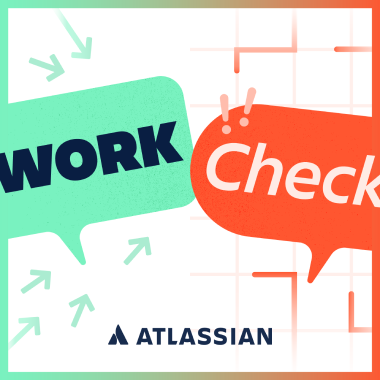How to avoid “manager crash” in 2025 and beyond
Meaningful steps organizations can take to support wellbeing, bolster resilience, and set the stage for leaders to thrive.
Late last year, the workforce wellbeing consultancy meQuilibrium made waves by predicting that 2025 would be the year of a great “manager crash.” According to the company’s research, years of pressure from the pandemic, the shifting demands of ever-evolving office configurations, and shaky institutional support have taken a cumulative toll on middle managers across industries. Managers are worn down, stressed out, and increasingly disengaged. Many are at an elevated risk of burnout.
Managers’ struggles could have devastating downstream effects on the workers they oversee. According to meQuilibrium SVP of Content and Head of Learning Alanna Fincke, employees who don’t feel supported by their managers are twice as likely to report poor overall wellbeing, and more than four times as likely to leave their jobs.
There’s a silver lining in this gloomy prediction. It’s not too late for both organizations and managers to make meaningful changes that support wellbeing, bolster resilience, and set the stage for teams and their leaders to thrive.
For organizations: Address psychosocial hazards
Although it may be too early to say whether a full-blown “crash” is underway, there’s no question that managers have been feeling squeezed. According to a 2024 meQuilibrium report, managers are 36% more likely than non-managers to say they’re feeling burned out at work and 24% more likely to say they’re thinking about quitting their job in the next six months. A major culprit? Too much work to complete on too-tight deadlines.
Unmanageable workloads and turnaround expectations are both psychosocial hazards – elements of a work environment that cause stress or interpersonal strain for employees – or features of a workplace culture that have a detrimental effect on well-being and performance. Oppressive to-do lists and untenable time pressure aren’t the only psychosocial risks that workers might face, but they’re among the most common and detrimental.
Organizations play a critical role in mitigating these all-too-common pitfalls. The following strategies can help.
Cultivate psychological safety
If employees don’t feel comfortable voicing their concerns, an organization is poorly equipped to assess whether managers have the support they need to succeed. That’s where psychological safety comes into play.
The American Psychological Association defines psychological safety as the “ability to freely express your opinions at work without fear.” This important feature of workplace culture doubles as a vital risk management tool for preventing burnout across all levels of an organization. A study of frontline medical workers during the COVID-19 pandemic found that psychological safety had a statistically significant link to lower burnout and higher adaptability. The researchers also concluded that psychological safety can prevent burnout from getting worse in times of crisis.
When organizations listen to feedback, model vulnerability, advocate for their people, and avoid playing blame games, they create an environment where psychological safety can flourish.
Enact concrete wellness protocols
Workplace wellness experts agree that companies need to adopt official policies to ensure their workers’ well-being. Boston-based psychotherapist Angela Ficken recommends that organizations offer leadership development programs focusing explicitly on stress management, and ensure that managers have access to mental health support. “Encouraging flexible work policies, structured delegation, and mandatory rest periods can help prevent burnout before it escalates,” Ficken adds.
Leaders should also be proactive about ensuring that employees use their vacation time – and they should lead by example, taking time off to rest and recharge as well.
Simply put, it isn’t enough for organizations to say they care. Where psychosocial well-being is concerned, actions speak louder than good intentions.
For managers: Tackle stress head-on
Acute feelings of stress are a normal, and even potentially useful, response to the pressures of everyday life. As the body’s evolutionary mechanism for handling an immediate threat, momentary stress sharpens focus and follow-through. In the long run, however, stress hormones such as cortisol, epinephrine, and norepinephrine can wreak havoc on an individual’s physical and mental health. Prolonged work-related stress is a known recipe for burnout.
For managers, the core advice is straightforward: Stress less. Easier said than done? Absolutely. But mitigating stress isn’t as daunting as it may appear. A few carefully deployed tactics can have an outsize impact on workplace zen.
Embrace a growth mindset
A growth mindset refers to an individual’s belief in their own capacity to learn the skills they need to tackle new challenges. It’s the ability to confront an unfamiliar situation and say, “I can figure this out.”
Research by Stanford psychologist Carol Dweck shows that people who adopt a growth mindset are more likely to experience mistakes as opportunities for learning, which in turn makes them likelier to seek solutions for everyday problems. Those who embrace a growth mindset also become more resilient to the curveballs that life throws their way, which studies suggest may reduce the incidence of stress and other adverse psychological symptoms.
Develop a game plan
Nobody – no matter how skilled or resilient – is able to do everything all at once. For managers to protect their energy and keep stress levels in check, a plan of action can make the difference between a sense of overwhelm and feeling in charge.
Sandy Goel, head of the organizational well-being consultancy Go Well Advisory, recommends that managers “focus on what they can control and do a couple things well.” That advice applies to managers coping with organizational uncertainty as well as those feeling the crush of strenuous workloads.
Casey Halloran, founder and CEO of the travel company Costa Rican Vacations, recommends a practice of “brutal prioritization,” a strategy adapted from scrum methodology to make workflows more manageable.
“One of the ways that I try to help my management team gain a sense of control and calm over the barrage of tasks, emails, and requests is to treat it like we would any complex project: Make time to review and prioritize the heck out of one’s own backlog,” Halloran says. Block calendar time to zoom out, reorganize, and figure out what really matters.
The onus is ultimately on organizations to provide the support their managers need to lead. But like so many good things in work and life, the best outcomes are a team effort.












































